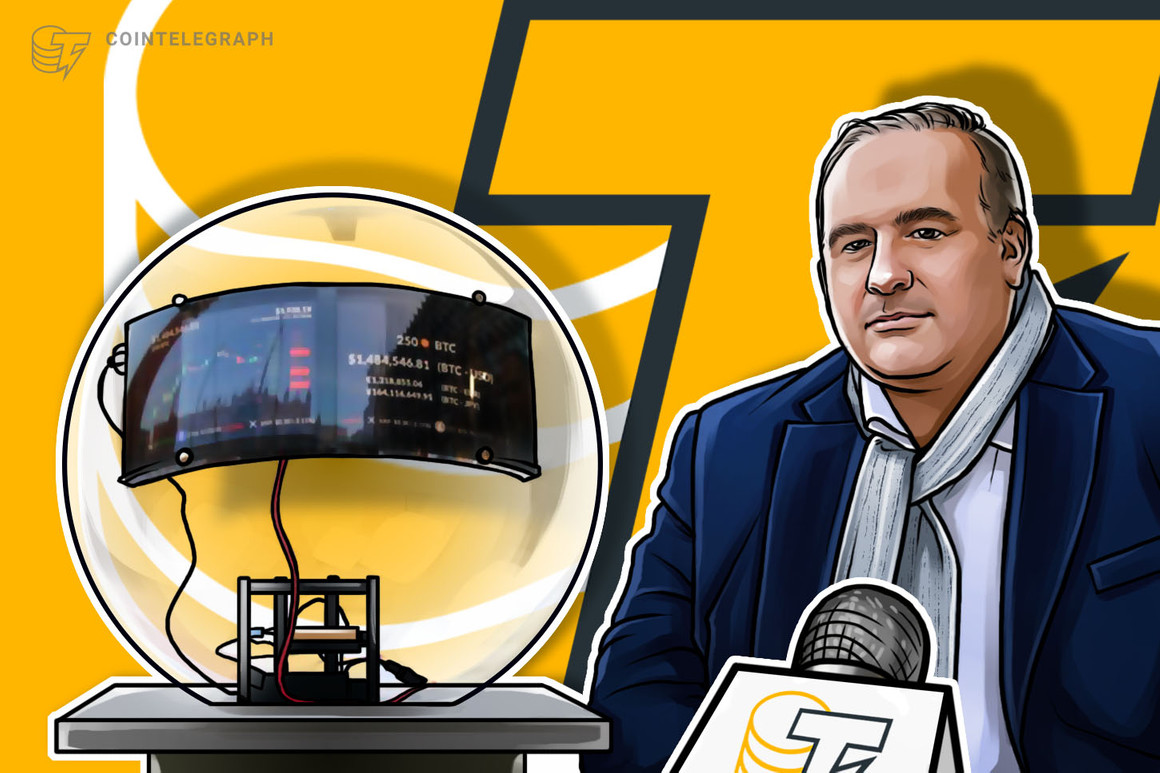
It’s all about the economy, cryptocurrencies, art and future projections. To talk about all this, Cointelegraph en Español reached out to artist Alberto Echegaray, the director of Trustlink and former representative of Argentina in the Financial Action Task Force.
Cointelegraph: Let’s start off by talking about your artwork, the Moneyball.
Alberto Echegaray: Moneyball began developing in 2012. It is a piece that touches on something that is taboo in art: money. And it is still taboo, although it is something that is changing now with NFTs.
What Moneyball wants to show is how most, or basically all, fiat currencies have no backing in the world right now. And how many governments take advantage of issuing these currencies to generate inflation, which is basically a tax — a phantom that takes away people’s purchasing power.
With this concept, I started to work on Moneyball with dollars. I lived in Washington, DC for about 12 years — I did some consulting for the Fed. That’s how I came to the Fed, I was invited to tour the facilities of a division where they print dollars.
At that time, they were replacing old dollars with the new dollars that are in circulation now. In one part, I found a huge warehouse with billions of dollars destroyed. That’s when I thought, This is incredible. You couldn’t take pictures — there were a lot of security measures. I asked for the destroyed money, but I was told that the money is state property, it’s not our property. And even if it’s destroyed, it’s still federal property.
I had to write a series of letters, and after several months, they gave me two million dollars in 100-dollar bills, destroyed. And so I began to create the artwork.
CT: And how did you come up with the idea of adding Bitcoin to your work?
AE: At the end of 2013, a Venezuelan in San Francisco told me about BTC and gave me some, which I still have. I didn’t pay much attention to it until 2015 or 2016.
I talked to several people in Silicon Valley, and they were telling me that it was going to be part of the future, especially blockchain. I started buying Bitcoin and really getting into it. Then I opened a fund and became a crypto missionary.
“It was super interesting. Bitcoin started to grow. And at that time, I was able to travel to different countries for work. I started to discover resistance from all of the financial sectors. It seemed like I was talking about something linked to crime or money laundering. It was terrible.”
But in 2016, I was contacted by a person who became part of the Argentine government and needed some help with technology to prevent money laundering and terrorist financing. It was Mariano Federici, head of the Financial Investigations Unit. The FIU had practically nothing to fight against money laundering with Bitcoin and crypto. It was a mess. I was asked to help, and it was an interesting challenge. More advanced systems of analysis, data and information were installed.
But I was not interested in the prosecution part of the crime; I was much more interested in the technical and crypto part. At that time, Europol held a meeting where security specialists met on the subject of crypto and cybercrime. I was new, but I was invited by the Argentine government. Then, I was invited again to the FATF, and there I met some people — specifically from the U.S., China, Russia, South Africa and Australia — who knew something about crypto. They were a very strong team. And I started to see how regulations were going to develop
CT: Did you want to do more and see the other side behind the curtain?
AE: That was in 2016/2017. But before I joined FATF in the Argentina chair, I had four years of experience working in Paris on regulatory issues. I had started to develop, in parallel, a private note off-market, and it was the first synthetic with the underlying asset being Bitcoin.
And there, I was able to structure a financial product that you could invest from a bank account. It was super successful, until the banks told me that they could not accept money because it involved BTC.
I started thinking about Cryptoball. If I had gone through fiat money, showing it to be worthless, I said I’m going to try it with crypto. I started developing the Cryptoball, but in 2017/2018, it was hard to get curved displays that would show the price of BTC. I had to contact a person in China who gave me access to flexible screens.
Cryptoball is a sphere with two flexible screens connected to software in a processor. The processor shows the real-time value of BTC that is held in a hardware wallet within the piece. It shows the price in yen, euros and dollars. By that time, I got 250 BTC, and I placed them in the Ledger wallet.
“Next to the installation at the Venice Biennale, I placed a million dollars and a million euros. There were a lot of young people. Many people from the art world asked me what it was because they didn’t understand.”
That’s when a European collector who I didn’t know approached me. He offered to meet me at a restaurant the next day. It was very interesting because then they contacted me on his behalf and talked about “His Royal Highness.”
He turned out to be a prince who is very supportive of the culture. We sat down and talked about the artwork. I couldn’t believe it because the Venice Biennale is not a place where you sell.
The Biennale ended, and I took the artwork to his house, a place in Switzerland. It’s a very interesting story.
CT: The art and crypto worlds are getting along very well. What do you think about NFTs? Do you have plans to work with this technology?
AE: I am starting the process of tokenizing some works. I’m thinking about tokenizing the sphere, but I want it to be something interesting. Not just a 3D design of artwork or a sculpture but, for example, a kind of live ticker that shows the price. Something that exists in real life, that exists in parallel in different dimensions.
I’m also working on 3D mapping and augmenting reality with a group of people. I was also invited to be an adviser on an NFT platform that has established artists.
I think we are at the beginning of tokenization and a lot of interesting things that can spread the art. By this, I mean that before, it was very difficult for artists who graduated from art schools to access galleries. This is changing dramatically. Now, art school graduates who have chosen to dedicate themselves to digital or virtual art are getting job offers, as is happening in the gaming sector, for example.
This is added to all the mass consumer brands that are getting into the virtual world. It’s amazing what’s coming.
CT: Regarding the future of private banking, do you think that banks are going to work with crypto or against crypto?
AE: All the big banks already have large crypto research divisions. They know that this is a new system within the financial system. It’s like when we talk about landline phones and cell phones — they are going to end up cannibalizing everything.
But they are still clinging to their transfer systems and their ways of charging commissions and making money, and they haven’t realized that this has changed dramatically.
“If they don’t understand staking or DeFi, and if they don’t adopt it quickly, they are going to see their business disappear overnight. There are some who try to understand it, but it’s very difficult.”
The same goes for regulators. There are not enough human resources to ask who understands both worlds. And there is no capacity, brainpower and determination. They think it is still a long way away.
CT: What do you think the state of the global monetary system will be like in 2030?
AE: I think there will be huge opportunities for the new generations. It’s a parallel system of governments, which is based on the speed of technology. I think in 2030, there will be a society that is more integrated on the one hand, but more discriminatory on the other. They are going to be very powerful groups.
What we are seeing with crypto is basically a revolution of assets or private currencies like we have never seen before. In the case of crypto, I clearly see private systems, linked to private space systems, which may or may not be open source. I see banks in this space, much more evolved digital assets, and the tokenization of commodities happening in the future.
Traders do not want to lose control of all this. That’s kind of the projection I see. I think there will be a new system that is neither capitalist nor socialist.






